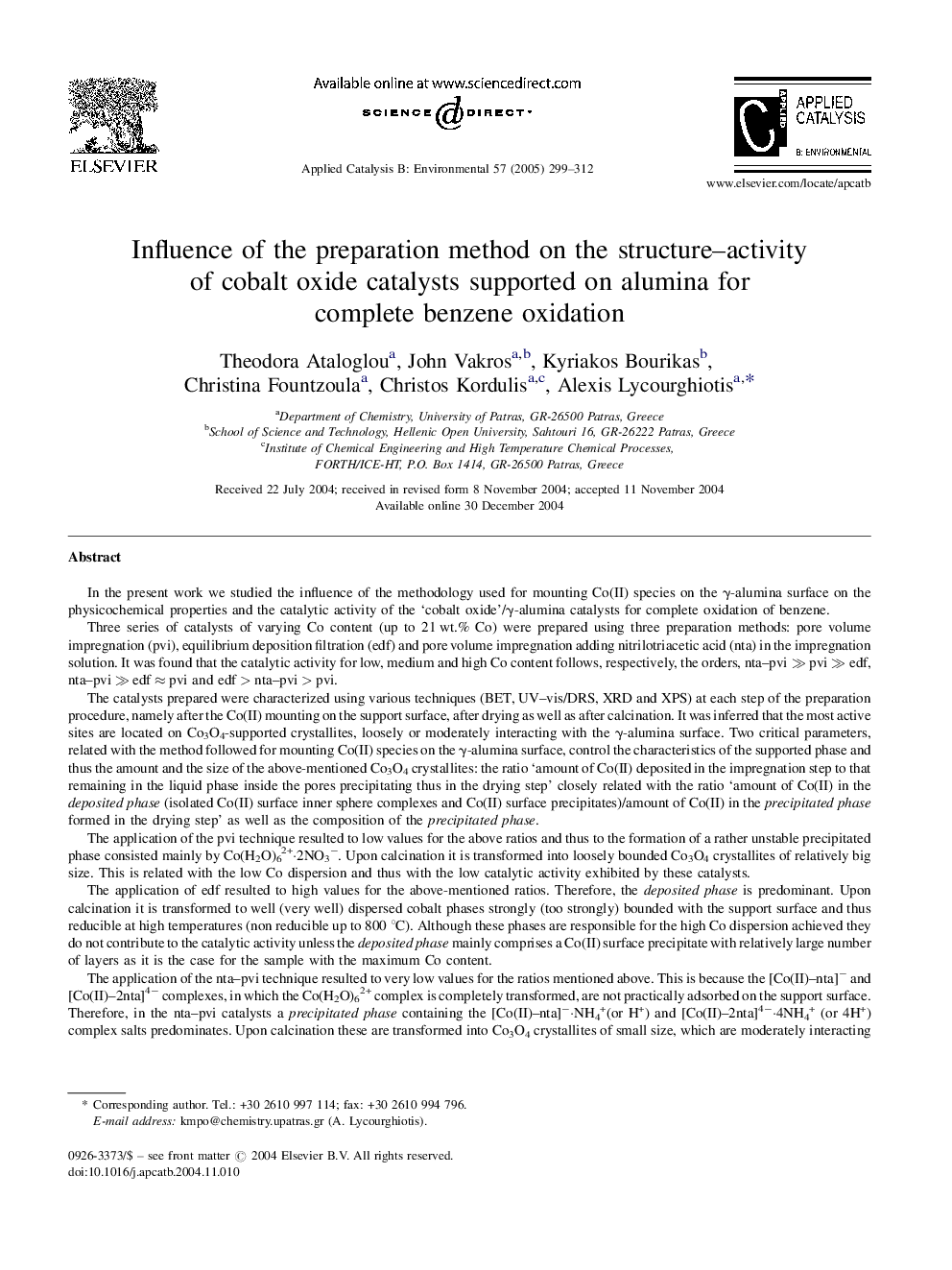| Article ID | Journal | Published Year | Pages | File Type |
|---|---|---|---|---|
| 10241335 | Applied Catalysis B: Environmental | 2005 | 14 Pages |
Abstract
The application of the nta-pvi technique resulted to very low values for the ratios mentioned above. This is because the [Co(II)-nta]â and [Co(II)-2nta]4â complexes, in which the Co(H2O)62+ complex is completely transformed, are not practically adsorbed on the support surface. Therefore, in the nta-pvi catalysts a precipitated phase containing the [Co(II)-nta]â·NH4+(or H+) and [Co(II)-2nta]4â·4NH4+ (or 4H+) complex salts predominates. Upon calcination these are transformed into Co3O4 crystallites of small size, which are moderately interacting with the support surface. This is related with the relatively high Co dispersion, mainly that for the catalytically active species, and thus with high catalytic activity.
Keywords
Related Topics
Physical Sciences and Engineering
Chemical Engineering
Catalysis
Authors
Theodora Ataloglou, John Vakros, Kyriakos Bourikas, Christina Fountzoula, Christos Kordulis, Alexis Lycourghiotis,
